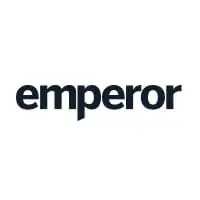

- Emperor
- Simone Schomper
- Emperor
- Junior Employee Engagement Strategist
- Opinion
- Events
- 11 November 2025
- 5 min
Share
Building Stronger Multigenerational Workplaces
The rise of multigenerational workplaces has become a defining feature of modern employment. Today, it’s more common than ever to have four generations working side by side - each bringing distinct values, communication styles and technological know-how.
At Emperor’s recent panel discussion, ‘Navigating a Multigenerational Workplace’, Victoria Sugg (CEO, Emperor) joined Katie Eustace (Senior Employee Engagement Consultant, Emperor), Tessa McCaffrey (Senior Engagement Communications Manager, Oritain) and intergenerational expert Henry Rose Lee to explore what it means to have so many generations sharing one workplace and whether a one-size-fits-all approach to engagement, communication and culture is effective in today’s workplace.
The generational landscape
Henry Rose Lee explained that the four generations in today’s workforce are each influenced by major events; from post-war recovery and financial crises to the pandemic and the rise of AI. These experiences have shaped how people communicate and view work, loyalty, recognition, and success. And soon Generation Alpha, born between 2010 and 2025, will begin to enter the workplace.
So how can businesses harness the strengths of such diverse groups? Here are six key take-aways from the panel discussion:
1) Use generational insight as a lens, not a label. Generational research can offer useful context for understanding the make-up of your workforce or team, but it should never replace the fundamentals of employee listening to understand the needs and wants of your people.
2) Connection is the constant. Across every generation, people want a sense of community and belonging. That’s why companies need to choose which moments matter most to their business and culture - and then invest in doing those really well.
3) Focus on audience insight. A lot of companies collect employee data. But the best companies translate this data into insights and use them to shape how they communicate to their different audiences. And we’re starting to see insights being turned into personas, which can be integrated into generative AI tools to create more personalised content. That’s the future direction of internal communication.
4) Collaborative learning is key. We’re not just co-existing across generations. We’re collaborating, learning – and sometimes colliding. Every generation has something to learn from the others. Companies who thrive are fostering a sense of curiosity and learning through initiatives like mentoring and reverse-mentoring, to help their people learn from each other and respect diverse perspectives.
5) Tap into a shared human motivation. When it comes to employer brand expectations, there’s a lot of chatter about how different generations prioritise different things from work – whether that’s flexibility, stability, purpose or recognition. But what makes a truly compelling employer brand is one that manages to tap into a shared human motivation – that’s true to the business, and what employees and candidates are seeking from work – no matter what generation they belong to.
6) Meet Gen Z where they are. When it comes to recruiting Gen Z, the best companies are reaching them where they already are. Social media is the obvious place, but we’re seeing some companies get even more creative, using popular Gen Z platforms like Roblox and podcasts too.
Looking ahead
One point that our panellists all agreed on is that understanding and integrating generational diversity is not just a trend, but a fundamental component of business success. It’s an opportunity to build workplaces that are creative, resilient and, as yet another generation reaches working age, ready for whatever comes next.
At Emperor we are experts in talent, culture and engagement.
If you’d like to find out how Emperor can help you power your multigenerational workforce, please get in touch at [email protected]